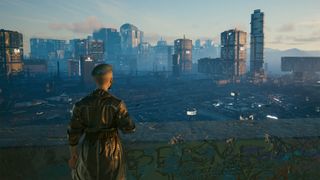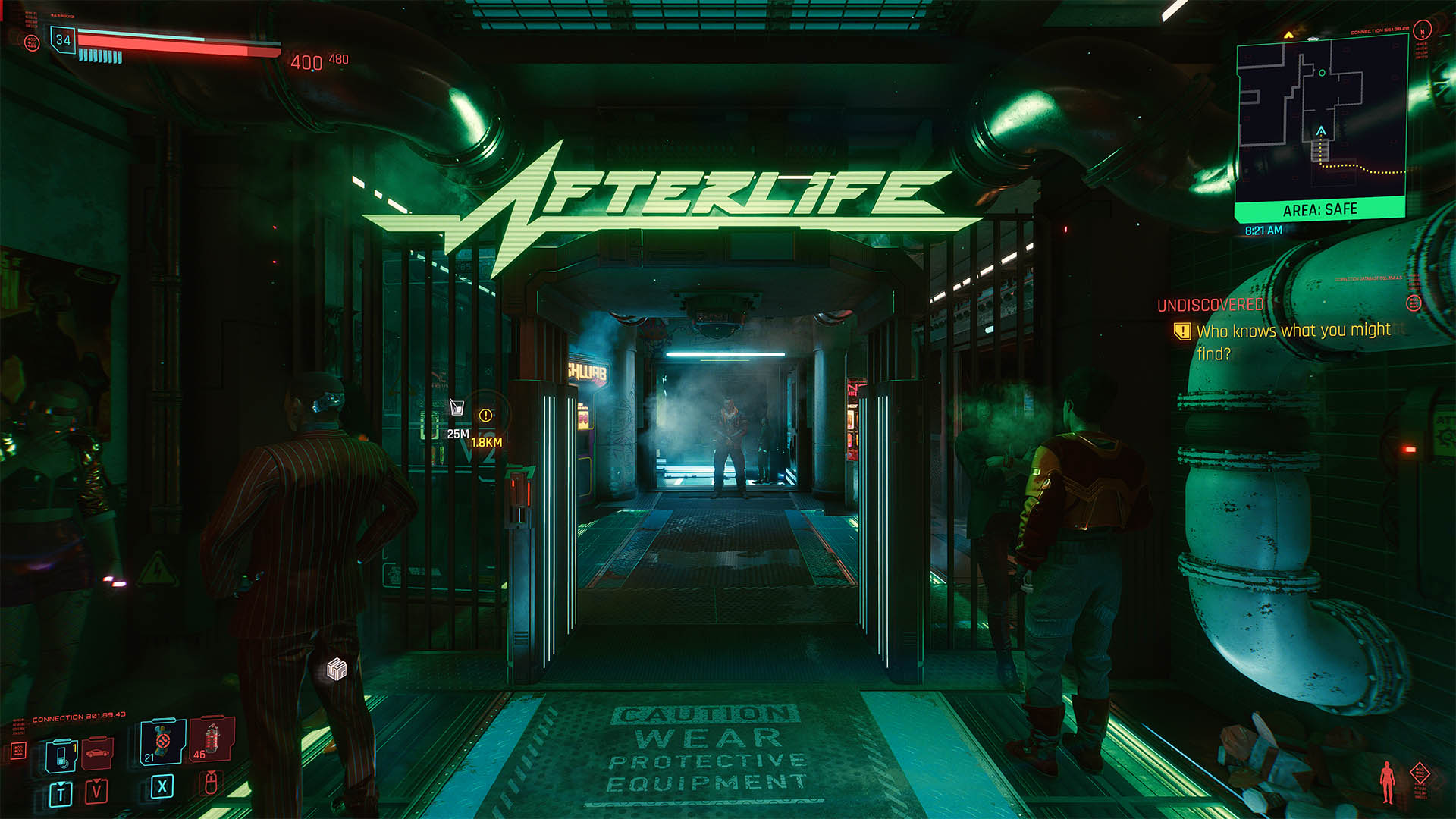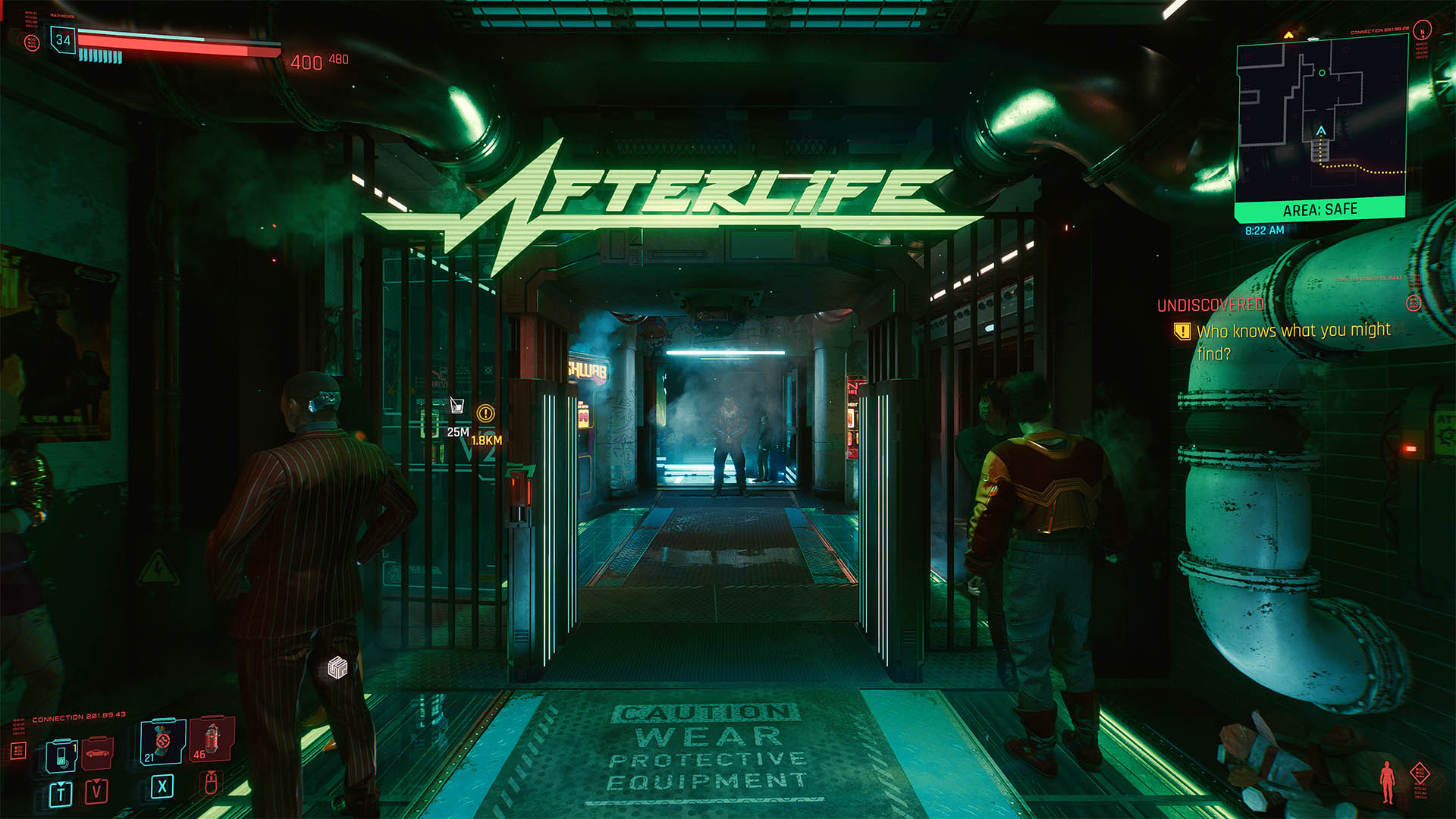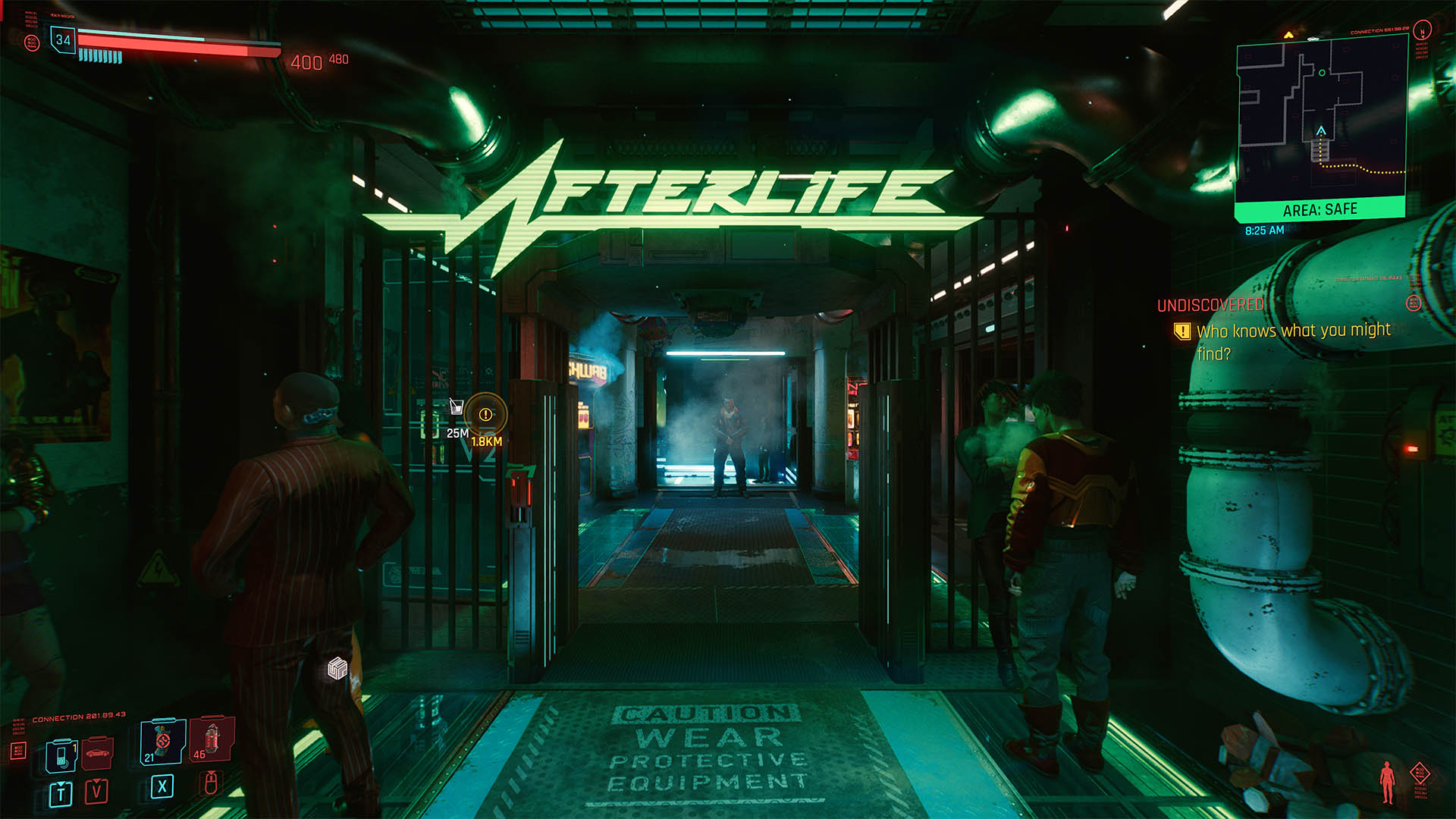Even AMD's $999 RX 6900 XT can't cope with Cyberpunk 2077's new Radeon ray tracing mode | PC Gamer - hilltrachused
Flatbottom AMD's $999 RX 6900 XT canful't cope with Hacker 2077's new Radeon shaft tracing fashion

With the arrival of a mammoth patch from CD Projekt Red for Cyberpunk 2077 it is right away possible to enjoy the shiny floors and aglitter lights of Night City with an AMD graphics placard. Specifically, the Radeon RX 6000-series card game, fitted with the latest RDNA 2 computer architecture, are now capable of a bit real-time ray tracing in Cyberpunk 2077.
And I allege 'a little' for good reason.
The latest Cyberpunk patch up is a to a greater extent than modest 33GB install (actually a little more space will be mandatory to download), and its significant size is largely explained by the 484 tap fixes it includes for the PC version. Bundled alongside that is the arrival of AMD-powered real-sentence ray trace in-gamey, a sport notable by its deletion from the launch day roster.
It's an interesting prognosis for anyone rocking the latest AMD atomic number 14, too, as Cyberpunk 2077 may pose the biggest challenge for RDNA 2 Si since, well, ever. The brave is tough going without even a drop of ray tracing to address of. Furthermore, AMD is contending with much powerful ray trace silicon in Nvidia's RT Cores, which have proven themselves more capable than AMD's Radiate Accelerators.
With that being said, the truth lies in the numbers racket. Indeed I've panting the dust remove my Cyberpunk install and assumed the Radeon RX 6900 XT and Radeon RX 6700 XT for a twisting in-halting to state you whether it's all worth it.
First up, the Radeon RX 6900 XT. This is AMD's teetotum card and an unconditioned stunner in rasterised performance. Information technology's just a shame information technology's kind of pricey side by side to the RX 6800 Crosstalk and GeForce RTX 3080. Nevertheless, this GPU offers RDNA 2 at its absolute finest, and that agency it's the flagship for reddened team ray tracing execution in Cyberpunk 2077.
My benchmark run around is a prompt lap around the Afterlife club, which has become a rather picturesque place in-game for shaft trace capacity. As such, you may find a bit more carrying into action out in the streets, or a little less when you get into heavy combat.
| Avg | Fukien | |
| 4K - Ultra - RT off | 44 | 28 |
| 4K - RT Metier | 17 | 13 |
| 4K - RT Extremist | 11 | 9 |
| 1440p - Ultra - RT soured | 85 | 36 |
| 1440p - RT Medium | 34 | 25 |
| 1440p - RT Ultra | 23 | 19 |
As you can run into in the hold over above, you're looking at a pretty significant drop in performance from the Ultra preset to the Ray Tracing Medium preset in-pun. In that respect are atomic number 102 ray-traced reflections at this score, only shadows and 'medium' firing, but even so it's unsentimental going for symmetric the elevation RDNA 2 card.
Ray-traced reflections, mayhap the most clearly noticeable re tracing effects of the lot, is introduced with the Ray Tracing Ultra preset. This setting sees a dramatic reduction in performance that creeps down to individual digits at times.
Needless to sound out, neither inspires much hope for smooth framerates, not even 30fps, at 4K.
Perhaps that's a given. Even without ray tracing, the Radeon RX 6900 XT struggles to manage a steady 60fps at Ultra in 4K. 1440p is a much more admirable goal in that regard. The RX 6700 XT hits a decent average of 85fps with nobelium ray tracing enabled, and about maintains a steady 30fps or Sir Thomas More with ray trace enabled, but not cranked all the fashio aweigh.
It's lul far from what I would call smooth going, however. It's a mighty reduction in performance for a handful of visual personal effects.
| Avg | Min | |
| 1080p - High - RT off | 102 | 39 |
| 1080p - Ultra - RT off | 91 | 44 |
| 1080p - RT Sensitive | 34 | 25 |
| 1080p - RT Ultra | 24 | 19 |
Test rig
Central processing unit: AMD Ryzen 7 5800X
Motherboard: MSI GODLIKE X570
Memory: Corsair Vengeance 32GB @ 2,666MHz
Storage: 1TB WD Black SN750
CPU Cooler: G.Skill 360mm liquid cooler
PSU: EVGA 850W G2
Happening to the Radeon RX 6700 XT and it's a similar story. I only ran this GPU at 1080p for the purposes of this examination, which is probably a soft mercy on my part because the performance cliffedge of electron beam tracing puts this $379 in an already rather precarious position, even at the lower resolution.
There's one salve for beam tracing in Cyber-terrorist 2077, or at least potential salve, in FidelityFX CAS, operating theater Content Adaptive Sharpening. This is a sharpening and upscaling feature built in to AMD's FidelityFX GPU suite that allows for sharpening within a scenery supported happening the scene's details.
Why might CAS have an effect along performance? I take heed you call for. Used in tandem with a impulsive render resolution—a resolution that is altered on the fly based on whatever given scene to maintain a steady fps—CAS can cut out some of the blurriness that would otherwise equal introduced away rendering at a lower settlement.
This differs from Nvidia's DLSS in that it doesn't introduce new visual info into a fit, sole alters what's there for clarity. AMD's planning a inexperienced feature in FidelityFX Super Resolution for just that purpose, but it's unfortunately non out yet.




So instead it's CAS that all our hopes rest, and unfortunately it's not an altogether pleasant experience in motion (it's a trifle tough to tell the difference between CAS happening and off in screenshots, I'll acknowledge). For one, and I assume this is a germ that will embody unadjustable, CAS causes a flickering of few textures during gameplay connected our test system when ray tracing is enabled.
IT comes and go into any bestowed scene, but is prevalent enough that you would virtually likely bid to invalid the characteristic altogether, or disable ray of light tracing (which also puts an death to the flicker), simply to be eliminate it.
Possibly more importantly, CAS can also introduce a significant level of blur. The effect of CAS can be well-adjusted for operation and limpidity, so the level of blurriness really depends happening what classify of performance you're afterward and how uttermost you'rhenium willing to go to chase that fps dream, but it's again a bit little lucidity in commutation for improved visuals elsewhere—it's always a trade off, and not necessarily a worthy extraordinary.
In my testing, information technology all felt too much blur to justify the extravagance, and perhaps frivolous, re tracing implementation in-game. Cyber-terrorist 2077 is a visually effective game that's only marginally improved by extensive kindling and reflections, and I found that during my time with it, even with ray trace capability on AMD's cards, higher framerates were instead my principal focus.
It's bang-up to see AMD back on even footing with Nvidia in Cyberpunk 2077 in terms of feature livelihood, afterwards what was a surprising launch day omission. Yet even post-ray of light tracing livelihood, my recommendation is to keep this feature disabled, even if you spent a grand on the flagship RDNA 2 card.
Source: https://www.pcgamer.com/cyberpunk-2077-ray-tracing-amd-graphics-card-rdna-2/
Posted by: hilltrachused.blogspot.com



0 Response to "Even AMD's $999 RX 6900 XT can't cope with Cyberpunk 2077's new Radeon ray tracing mode | PC Gamer - hilltrachused"
Post a Comment